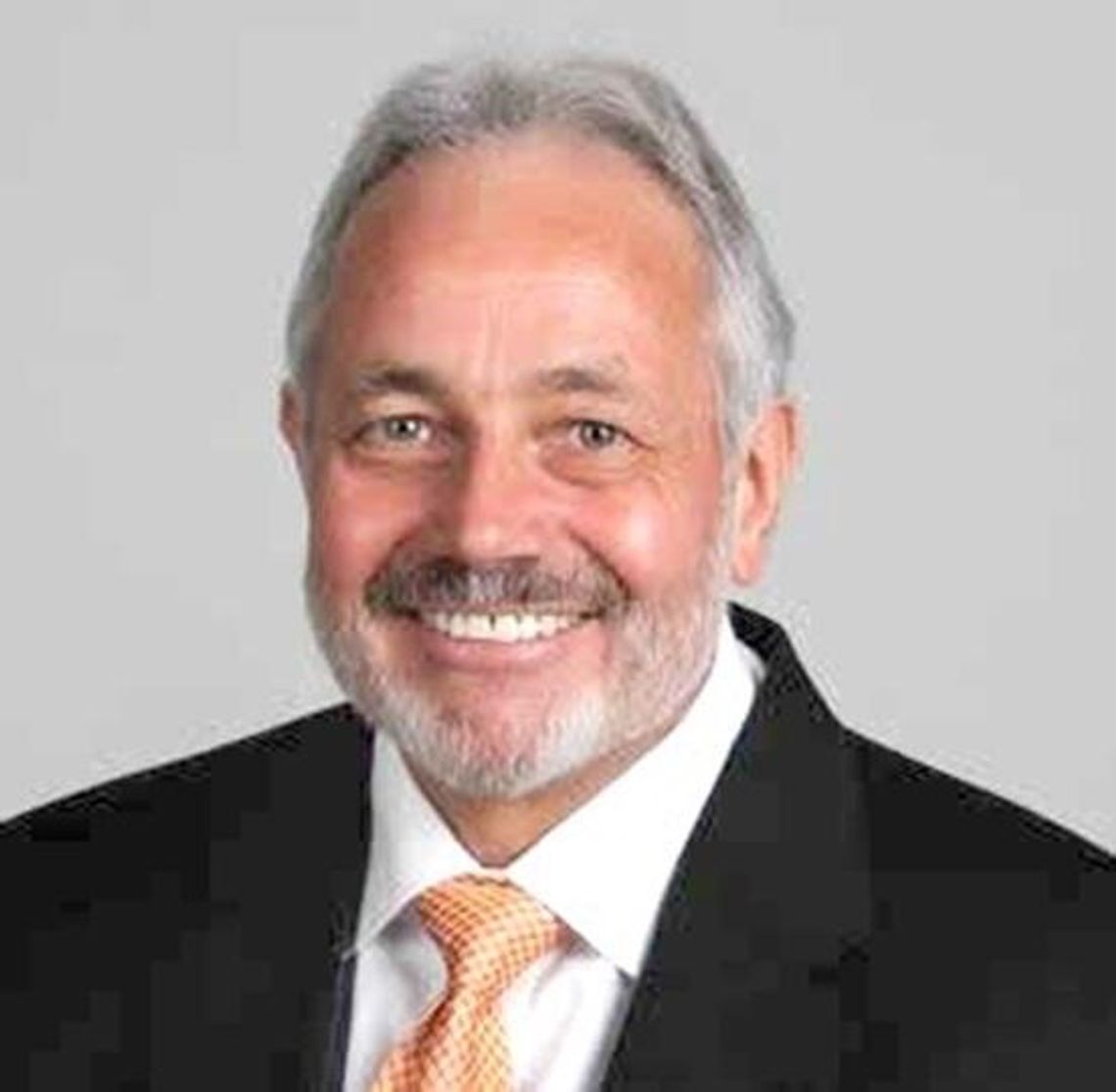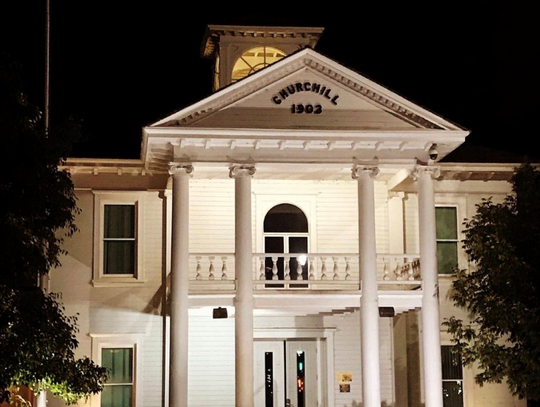Northern Nevada's energy grid could quadruple in size in the "foreseeable future," if the data-storage industry continues to grow east of the Reno-Sparks metro area and other locations, Doug Cannon, the president and CEO of NV Energy said on Nevada Newsmakers.
"So it is absolutely foreseeable in the next several years that you could double, triple, even quadruple the size of the total electric grid in Northern Nevada," Cannon told host Sam Shad in an interview last week in Las Vegas.
It's hard to fathom the size of an electrical grid that will be four times as large as it is now. Tract, a company based in Denver, Colo., which develops master plans and builds infrastructure for data-storage centers, said last year that it plans to invest $100 billion into Storey County over the next 10 years for its data-storage centers.
Another company, Vantage, will invest $245 million in another Storey County data center, the Governor's Office of Economic Development said last year.
Yet NV Energy would also have to invest heavily to produce enough energy to power those businesses and others like them. Data storage can consume a significant amount of energy to constantly keep their many servers and storage systems running and cooled.
"We're talking billions of dollars of investment that it takes to be able to build that infrastructure," Cannon said.
Cannon, however, does not want to invest heavily in infrastructure until the data storage industry proves its plans will become reality.
"The other side of this is that we want to be very careful about protecting our existing customers," Cannon said. "We cannot go out and make all of this big investment and then have that data-center load not show up."
If the data-center plans don't materialize, "then all of a sudden those costs are shifted to our existing customers," Cannon said. "So as we're talking to these data centers, we're talking to them and trying to provide them realistic timelines.
"But at the same time we're having the conversation, they're going to have to come to the table and deliver the financial support to be able to build this infrastructure so that those costs don't get placed on our existing customers,"
The executives of the data-center industry understand the local concerns, Cannon said.
"There has been alignment across the board that these data centers do not want to come in and put impacts on the local community," Cannon said. "So I have not had a single leader at those companies want to shift that risk to our customers. So I'm I'm grateful for that. I think that's a real positive.
"There are productive conversations happening with these data-center developers," Cannon continued. "They recognize the role that they have to play coming to these communities. And so those are positive conversations."
As with any major project, the devil's in the details and those details still are not finalized, Cannon said.
"Do we have all the details figured out yet? I don't, but there's a lot of really productive conversations going on in real time," he said. "I spend a chunk of just about every single day trying to figure out how we're going to work through and support this data-center development."
Opposition in some sectors is festering against data centers.
Last week, the Reno Planning Commission recommended the city place a temporary pause on filing and issuing permits for data centers. However that vote does not impact data-center development east of the metro area in Storey and Lyon counties.
Last month, the Sierra Club’s Toiyabe chapter, an environmental protection organization, filed an appeal against the Planning Commission's approval of the Webb Data Center, near the intersection of North Virginia and Stead Blvd.
NV Energy wants to accommodate this growing industry, Cannon said.
"One of the themes that we really try to implement is that we want to keep Nevada open for business," he said. "That's a comment that's been made to us from our local officials here. And so we're trying to advance that."
Is nuclear energy viable for future?
The question remains: Where will NV Energy get the electricity for such a large expansion?
The Greenlink West project will help.
With a projected cost of $4.2 billion, Greenlink West will include a transmission line to run 350 miles between Las Vegas and Reno and will serve as a "backbone" of the new grid, Cannon said.
The Greenlink West project received its final federal approval in September from the Department of the Interior. It could eventually transmit as much as 4,000 megawatts of clean energy, enough to power roughly 4.8 million homes. The project is expected to be up and running by 2027, according to published reports.
Yet the Greenlink West will not be enough to power the proposed data-storage industry and its huge energy demands, Cannon said.
"There will be additional transmission infrastructure (needed)," he said. "There will be significant electric generation infrastructure that will be
needed. That's something we haven't talked a lot about in Nevada for a long time. We've been very focused on transmission. We've been focused on renewable energy. We're going to have to take a broad-ranging portfolio approach to really meet the needs of these data-centers going forward."
Cannon does not rule out considering nuclear energy in the future but NV Energy is not seriously pursuing it now, he added.
"As we look at energy needs in the U.S. over the coming decades, if we are serious about decarbonizing, nuclear energy ought to be a part of that conversation," he said.
"It is a powerful tool for decarbonizing," Cannon said about nuclear energy. "And yet (it has) a baseload energy supply. And when I say baseload, it's there all the time. And it's clean, it's carbon-free."
Some are still wary about nuclear energy. They can point to two major accidents at Chernobyl and Fukushima Daiichi.
However, these are the only major accidents to have occurred in over 18,500 cumulative reactor-years of commercial nuclear power operation in 36 countries, according to the World Nuclear Association.
A cursory research shows more than 30 nuclear or radiation accidents have resulted in death since the 1950s at nuclear power plants, aboard nuclear submarines and/or in radiotherapy incidents. Only two of the 30-plus incidents happened in the past 20 years as nuclear technology continues to improve.
"So I know there has been a lot of controversy around nuclear," Cannon said. "Given a number of factors in Nevada, we are not pursuing nuclear power in Nevada right now.
"That said, we are monitoring the market very closely," he added.
He sees promise in small modular nuclear reactors (SMRs) that can be built in factories or assembled on-site. They use fission to produce heat, which can be turned into electricity.
"I think that's an exciting technology," Cannon said. "It allows you to essentially stack a number of small reactors, and you can build anything from a 50-megawatt facility all the way up to a 1,000-megawatt facility by stacking these small reactors and then using them on an as-needed basis.
"I think it's an exciting decade to watch how that technology and others develop over the coming years," he said, adding NV Energy is not looking to be a leader in the development of nuclear energy.
"Let's let somebody else take those development costs," he said. "Let's make
sure it's safe. Let's make sure it's reliable. And as it gets commercially proven out, then absolutely."
Converting nuclear energy into electricity -- even in a SMR -- requires a lot of water, Cannon said.
"That's certainly less (water) than the big reactors, but water is an issue and water is an issue we're going to have to think about here in Nevada as we look at these different technologies," Cannon said.
.png)









Comment
Comments